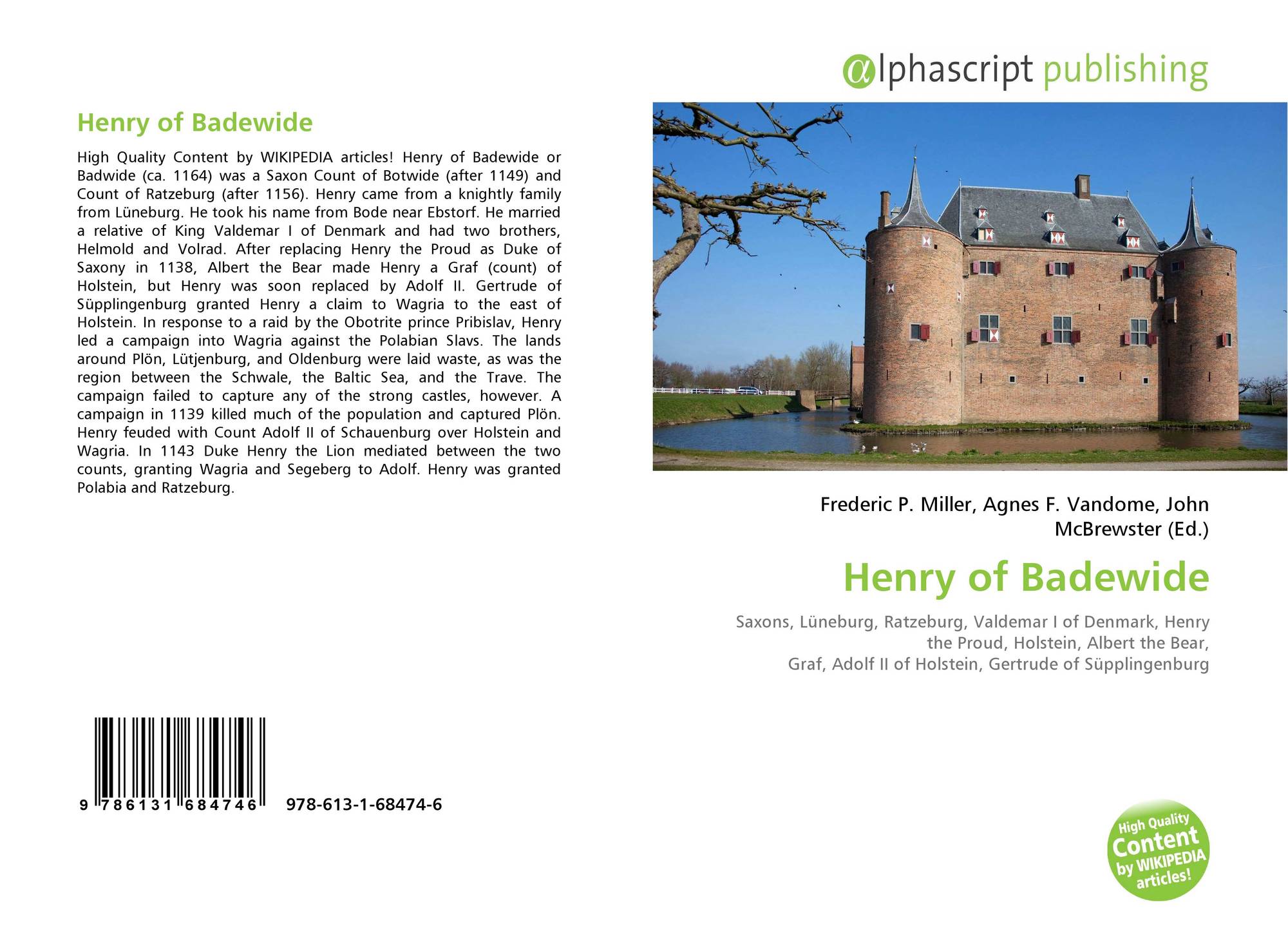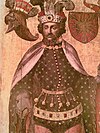Henry of Badewide
Henry of Bath Wide ( also: Heinrich von Bode Wide, Bodwide, Badewin, Badwide ) (* unknown, † 1164 ) was from 1138 to 1139 Count of Holstein and Stormarn, then Count in Wagrien, and from 1142 Count of Polabien or Ratzeburg. He was the founder of the eponymous short-lived comital the Badwiden.
Henry of Bath Wide comes from a resident of the Lüneburg Gender noble suitor, named presumably after his possession in Bode at Ebstorf ( north-west of Uelzen ). He married a name unknown relatives of King Valdemar the Great of Denmark. His brothers were Helmold and Volrad, the latter not, as is often assumed, the first Count of Dannenberg was.
Count of Holstein and Stormarn
1138 was Henry the Proud, duke of Saxony and Bavaria, of the House of Guelph, in the imperial ban. New Duke of Saxony was the Ascanians Albert the Bear. This made the knight Heinrich von bathing Wide Count of Holstein and Stormarn. The previous incumbent, the welfenburg loyal Adolf II of Schauenburg, had to give way. In winter 1138/39 devastated Henry of Bath Wide in a retaliatory campaign to the field of Wagrians, but without taking their castles in Plon, Luetjenburg and Oldenburg. Until the summer of 1139, the heavily fortified Castle Plön by a contingent of Holsten well led by their over ground Marcrad was conquered I..
Count of Wagrien
1139 Henry the Proud tried to reconquer the Duchy of Saxony, but died suddenly on October 20 in Quedlinburg. Nevertheless, Henry of Bath Wide had to clear under pressure from Adolf II of Schauenburg Nordalbingien; in his retreat he destroyed the Count's castle in Hamburg and the victories castle in Segeberg. Then he succeeded against payment of an appropriate sum of Gertrude, the widow of Henry the Proud and mother of Henry the Lion, who was the Count Adolf II not weighed, being awarded over the 1138/39 conquered by him Wagrien the rule.
Count of Ratzeburg
In May 1142 after Henry the Lion of King Conrad III. had been invested with the paternal duchy of Saxony, the Duke found a balance between the Count Henry of Bath Wide and Adolf II of Schauenburg. Adolf II received Holstein and Stormarn as well ( for a reasonable purchase price ) Wagrien, and Henry of Bath Wide received instead the land of Polabs, as newly created county. Capital was the ancient abodritische Gauburg of Ratzeburg, after the county was finally named. Duke Henry retained the Elbe crossing ( Ertheneburg ) and the Sadelbande ( Southern Lauenburg ). By 1154 Henry of Bath Wide as Count of Polabs ( Comes Polaborum ) is called, and only then as Count of Ratzeburg. 1162 he is also expressed as bailiff of the diocese of Ratzeburg. At its foundation in 1154 he presented 300 hooves country as features of the Diocese available, leaving the newly appointed bishop Evermod the island in Ratzeburg Lake near the castle as for the construction of Ratzeburg Cathedral and the bishop and cathedral chapter of dwellings.
In the summer of 1149 he and Adolf II participated in the campaign of Henry the Lion into submission Dithmarschens part, and in consequence he was until his death a faithful follower of the Duke of Saxony. For the settlement of its territory, he recruited many Westphalia.
After Henry's death in 1164 was succeeded by his eldest son Bernhard I of Ratzeburg as Count of Ratzeburg. This allowed his father to build on the Domhof in Ratzeburg a still preserved memorial stone. The stone bears the (Latin ) inscription:
" At the time of King Conrad and Duke Henry of Saxony Count Henry came to Ratzeburg and was there the first Christianity a solid foundation. His soul rest in peace. Amen. "








